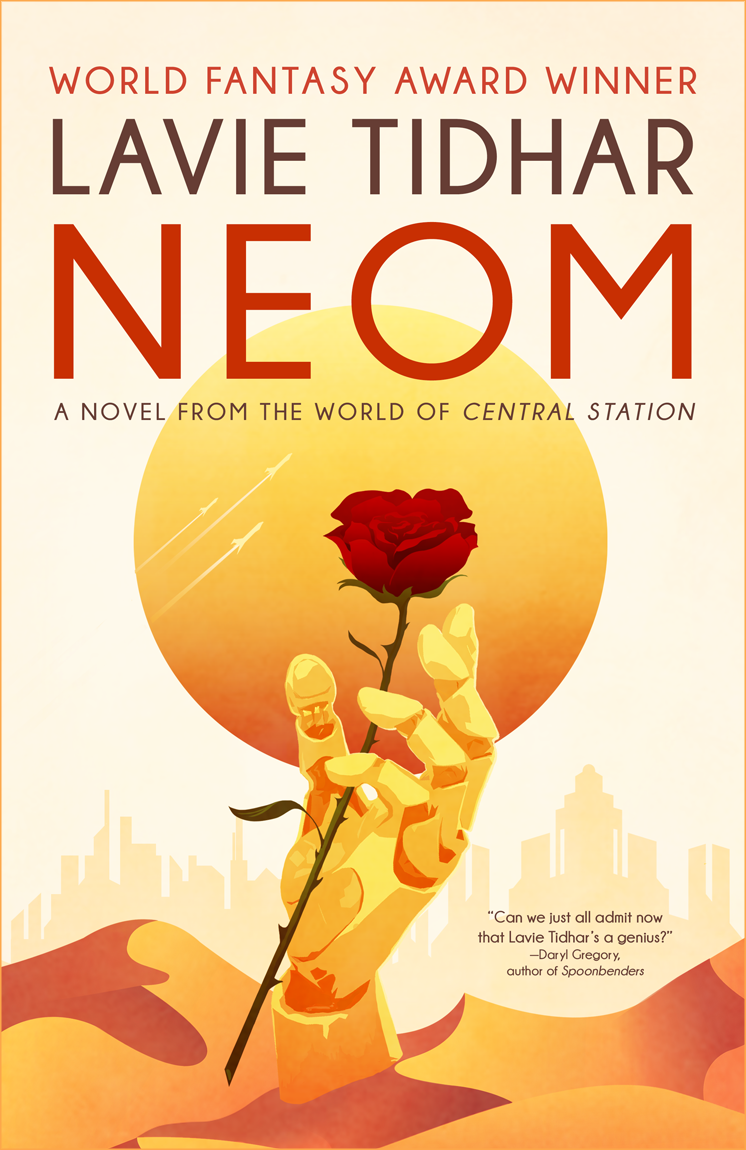Complete with his usual brilliance, Lavie Tidhar’s bewilderingly rich tapestry THE CIRCUMFERENCE OF THE WORLD is a 2023 mostest SF
NEOM is one of the best most underrated recent SF books because it is loaded with all the elements I love about the genre. It took me to another part of the world, it envisioned the future there. It made me smile, laugh, and feel emotions as a product of pure imagination.
Postcards From a Dying World
What stylistic issues were most important to the writing of THE CIRCUMFERENCE OF THE WORLD?
Auraist
It’s a good question – which is what you tend to say when you just don’t know the answer! I suppose each section, each voice in the book needed its own style, and it was a question of which one was most suitable. You know, with writing, it’s not so much about the style, it’s about trying to find some honesty, some core truth in the story. And of course as a writer, you professionally deal in falsehoolds, in make-believe and – what did I call it in the book? Occlusion? I think an interesting one, in terms of getting to the core truth of a thing, is the section featuring Delia, which is set on Vanuatu. You could call the style magical realism, I suppose, which I think is a bit of a rubbish label. It’s too indiscriminately used and I think it can be a bit dismissive. It drives my friend Silvia Moreno-Garcia nuts because it just gets applied to anything Latin American, like an entire continent has produced nothing else in a century. But I digress! I think what it does do, in that section, firstly it leans into Bislama, which is the common tongue of Vanuatu, which began as a contact language, a pidgin English that evolved, and which I find quite beautiful. I actually ended up writing short stories in Bislama which were published for one year in a column in the Vanuatu Daily Post. I tried to translate them into English at some point but again, you lose a lot in the translation. But that section – Storian Smol Blong Delia Welegtabit – captures I think the sense of life on the islands, in terms of the language and how the language reflects, for example, the sense of time. So Bislama only has the present tense as the default. Everything happens now, in a sort of ever-lasting present. You can apply future or present tenses, but you have to make an effort to do it. It’s also a fascinating language in terms of the current debate on pronouns – Bislama only has the one pronoun, “hem”. But it’s also, what I think that section does, is it captures the loose line between the “real” and the mythical. In the sense that you’d be having tea with a traditional magic practitioner, a kleva, and he’ll tell you – very matter of fact! – all about turning into a bird and flying to the hill of the dead to find someone’s ghost, because the dead man was supposed to leave some money for his wife but he’s hidden it. So the kleva goes off to find the ghost and the ghost tells him where the money is hidden. It’s stuff like that.

